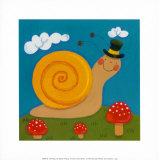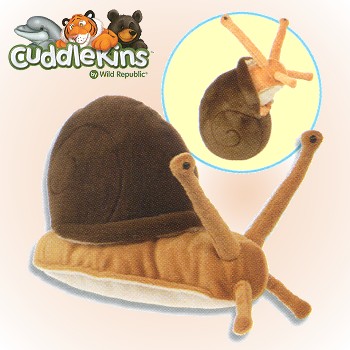|
|
Pet Mollusks - interesting facts about Land Snails
Fun Facts about your Pet Snail
1. Snails are not insects as some people think; they are in
fact Mollusks and belong to a completely different family
than insects. The Mollusca phylum contains such animals as
octopus, squid, slug, and clam, as well as snails.
2. Snails produce a slime trail made of a thick viscous
slime that they use to get around. This slime is so thick
that a snail can crawl across the edge of a knife and not
get cut, and it acts both as glue and a lubricant, so a
snail can slide across the ground on its single foot as well
as climbing up walls without falling off.
3. The biggest land snail, the Giant African Snail or Ghana
Tiger Snail, can be up to fifteen inches long (thirty-eight
centimeters) and weigh up to two pounds (six hundred grams).
4. The longest lived snail that was documented and recorded
lived for fifteen years, but a research study of Mud Snails
in the eastern United States indicated that some individuals
might live as long as seventy years!
5. The land snail's eyes are located on the ends of its two
longest antennas. Land snails have very poor eyesight; they
are only able to distinguish between dark and light. Snails
sense through touch and smell to find their food because of
their poor vision. But land snails have better eyesight in
comparison to smell than water snails have.
6. Snails have no ears and no sense of hearing.
7. Most snails have both male and female organs, so any
two snails that meet could mate with each other. Animals
having both male and female organs are commonly referred
to as hermaphrodites.
8. Snails do not travel in a straight line; they travel in
irregular lines and often in circles. Most land snails move
by pulsing waves in their one muscular "foot." The waves
move from back to front and push the snail forward by
pushing backward against the ground, but there is one snail
that "walks" by pushing back with one side of its foot and
then the other side similar to the way many other animals
walk.
9. Snails have sets of jaws inside their mouths, and radula
(muscles similar to the human tongue) with many rows (up to
thousands) of tiny teeth. The radula move back and forth
rapidly to grind up the snail's food. The teeth wear away
quickly because plants are hard to chew, but new teeth grow
back constantly, just like our fingernails.
10. Snails can defy gravity because their slime is so
viscous that it creates suction along any surface, so they
can climb plants and branches easily. The slime also helps
keep the snail from dehydrating, as it both protects the
snail from losing water to the soil and atmosphere but
attracts more moisture to itself.

11. Snails are Gastropods which means "Belly Footed Animal".
There are over five thousand species of mollusks that live
on land and in the sea.
12. Snails melt when you pour salt on them or they encounter
anything with a hint of salt in it. This happens because of
the snail's cells reacting to the salt in an osmotic
process, meaning that water rapidly leaves the cells of the
snail to balance the salt on the snail's body.
13. Snails can retract their tentacles into their body either
one or two at a time. They do this as a defensive measure to
save the retracting tentacle from being touched or hurt.
14. Garden snails will eat vegetables and fruits from
gardens, but also will eat soil and decaying plants and
insects.
15. The fastest snail in this very slow family of mollusks is
the speckled garden snail, which can move up to fifty-five
yards per hour, unlike other yard snails that travel at
speeds of twenty-three inches per hour at the most.
16. Snails hibernate over the winter and live off the fat
they have stored from the spring, summer and fall seasons.
They bury themselves and the slime door they form over their
shell opening hardens into a protective cover with only a
small hole for breathing. Some desert snails have been known
to remain hidden away in their shells for up to three years,
until a wet season makes things better for them.
17. Most land snails have lungs for breathing, but a few
kinds use gills. Conversely, most sea snails use gills, but
many types have lungs, and carry air in their shells.
18. Several types of garden snail are considered a delicacy
in French cooking, and are often eaten on festive occasions.
Because snails eat some foods that are dangerous to humans,
before they can be cooks they are kept in captivity and fed
ground cereals for a number of days to clean out their
digestive systems. Snails for eating are called Escargot.
19. National Escargot day is held on May 24th.
20. Snails are nocturnal animals and come out and hunt their
meals at night. Gardeners sometimes awaken in the morning to
find their strawberry patch empty of strawberries because of
the snails' nocturnal feeding.
21. When most land snails are about three years old they can
lay their small round eggs. You can sometimes find them
under stones, in small clusters of about thirty.
More about Snails &
Invertebrates
Delightfully Pleasing Plush Stuffed Snails

|